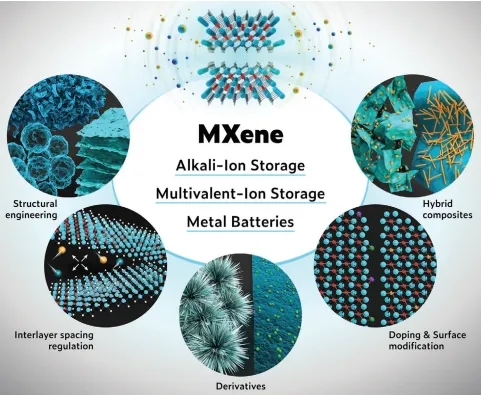google-site-verification: google0228a1feb97d321e.html
google-site-verification: google0228a1feb97d321e.html
google-site-verification: google0228a1feb97d321e.html
google-site-verification: google0228a1feb97d321e.html
google-site-verification: google0228a1feb97d321e.html
google-site-verification: google0228a1feb97d321e.html
MXenes -- nanomaterials -- YMUS Ultrasonic spraying
MXenes, two-dimensional transition metal carbides, nitrides or carbonitrides, a new type of two-dimensional structural materials. It has the characteristics of high specific surface area and high conductivity of graphene, as well as the advantages of flexible and adjustable components and controllable minimum nanolayer thickness. It has shown great potential in energy storage, adsorption, sensors, conductive fillers and other fields.
Research into the next generation of battery technology (beyond lithium-ion batteries) is advancing rapidly. The main challenge facing these emerging batteries is the lack of suitable electrode materials, which severely limits their further development. MXenes, a new class of two-dimensional transition metal carbides/nitrides/carbonitrides, are considered as potential electrode materials for these emerging batteries due to some of their desirable properties. Large and controlled layer spacing, excellent hydrophilicity, ultra-high conductivity, synthetic diversity, and rich surface chemistry make MXenes a promising electrode material, as well as other components for emerging batteries.
Research progress of MXenes in various kinds of rechargeable batteries, including alkali metal ion batteries (Na+, K+), polyvalent ion (Mg2+, Zn2+ and Al3+) batteries, etc. In particular, the synthesis strategies and MXenes in the battery of different roles, such as electrode, metal anode protective layer, carbon composite sulfur host, diaphragm improvement and conductive additives.

The atomization of ultrasonic nozzle can disperse MXene well and form more oxygen-containing functional groups on MXene. The atomization effect produced at low ultrasonic frequency is more conducive to improving the adsorption performance of MXene. Ultrasound-treated MXene has high adsorption capacity, selectivity and reusability, and can be used as an adsorbent to remove drug compounds.

Uniform catalyst coatings are deposited on PEM fuel cells, GDL, electrodes, various electrolyte membranes and solid oxide fuel cells, sprayed with a suspension containing carbon black inks, PTFE adhesives, ceramic pastes, platinum and other precious metals. YMUS Ultrasonic spraying of other metal alloys, including platinum, nickel, iridium and ruthenium based fuel cell catalyst coatings in metal oxide suspensions, to manufacture PEM fuel cells, polymer electrolyte membrane (PEM) electrolytic cells, DMFC (direct methanol fuel cells) and SOFC (solid oxide fuel cells) can produce large loads and high cell efficiency.